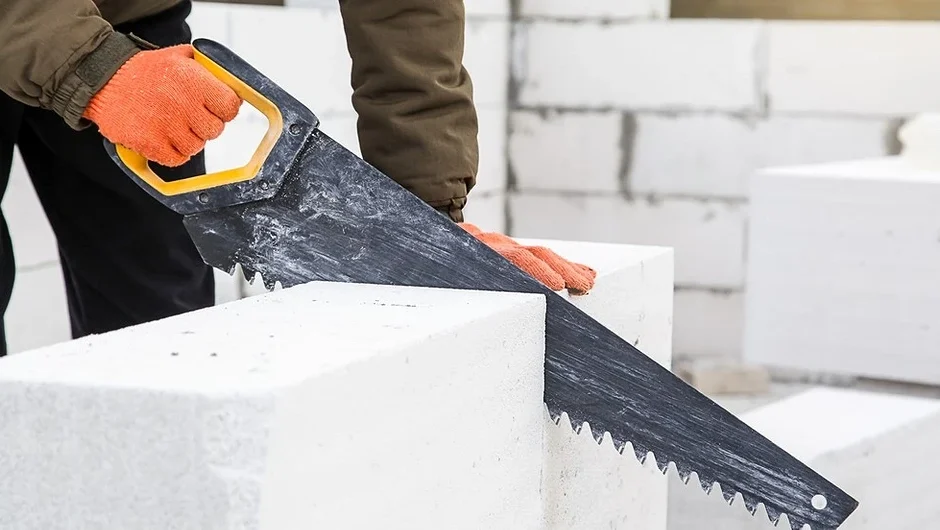We talk about the features of cutting aerated concrete blocks and describe in detail five possible options for sawing aerated concrete using different tools.
Lightweight and durable aerated concrete is highly valued by developers. It is used as insulation and as a building material for the construction of residential and commercial buildings. Trimming is often required during the construction process. If you have some skills, it is not difficult to do it yourself. Let’s figure out how to cut aerated concrete blocks and how to do it correctly.
Features of sawing aerated concrete
The building material belongs to the group of foam concrete. Their main characteristic is the presence of a large number of air bubbles in the structure. This property is determined by production technology. The prepared raw materials, which are high-quality cement, quartz, and aluminum powder, are filled with water. After this, the blanks are sent to an autoclave or frozen in natural conditions.
In any case, the result is a hardened foam mass, cut into geometrically precise blocks. They come in different sizes but are usually much larger than the usual standard brick. This speeds up the process of constructing the structure, but also somewhat complicates the cutting of gas blocks. They need to be trimmed if the whole element is not included in the masonry row, if blanks of a non-standard shape are needed, for example, for the construction of an arch, when it is necessary to cut grooves for reinforcement, etc.
Only dry parts can be cut. And that’s why. The foam mass of the block can be cut well, but the partitions between the air bubbles are not cut, the tool breaks them and crumbles them. Because of this, a large amount of fine dust is formed, which remains at the cut site. If the block is dry, the blade pushes it to the surface as it moves. Then the tool moves easily and smoothly. If the aerated concrete is wet or frozen, the blade crumbles the partitions, but cannot remove the resulting wet dust. It sticks to the canvas, which “gets stuck” in the thickness of the foam concrete and cannot move.
Another point to consider when cutting is the density of the material. The higher it is, the more effort you will have to put in when sawing. The densest are structural blocks. Their markings contain numbers from 400 and more.
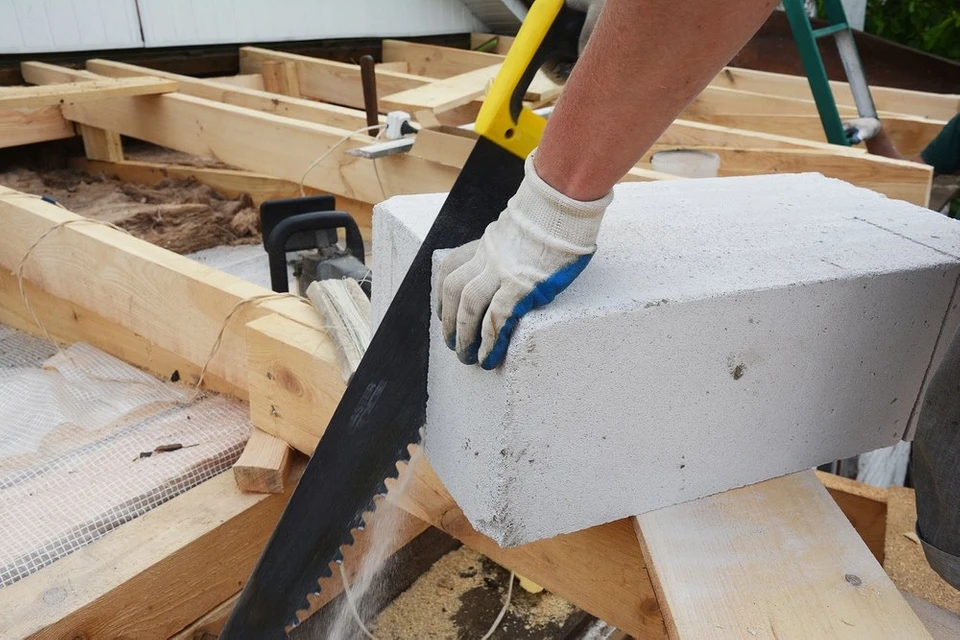
How to cut an aerated concrete block at home: a review of tools
The technology for laying aerated concrete involves precise cutting. Violation of the geometry of blocks is leveled by increasing the thickness of the seam. This is extremely undesirable since the performance characteristics of the masonry deteriorate and glue consumption increases. Let’s look at how to cut aerated concrete blocks to get a smooth edge.
1. Hacksaw
The most affordable option. To cut aerated blocks, only a special type of hacksaw is used, which is called “for aerated concrete.” It has a special arrangement and sharpening of the teeth, due to which the tool copes with the densest material.
The advantage of choosing a hacksaw is the ease of processing; even a novice builder can handle cutting. It is difficult to damage the part during the sawing process; the cut is obtained without chipping.
Sawing with a hacksaw also has its disadvantages. First of all, this is the low speed of work and the need to exert physical effort. The flexible blade easily moves to the side, which affects the accuracy of the cut. Therefore, it is advisable to choose thicker blades, as they are easier to see. The standard length of a hacksaw blade allows you to cut only small blocks. It is almost impossible to accurately cut large parts with it.
We offer operating instructions.
- We mark the aerated concrete block. Using a square and a pencil, draw cutting lines on all four edges.
- Along the marked lines, we make shallow cuts on two long edges and one short one between them. They will help you navigate when sawing.
- We place the part on a flat base so that the sawn fragment does not fall.
- We insert the hacksaw into the cuts and start sawing. It is necessary to saw without excessive effort, otherwise, the blade will move to the side.
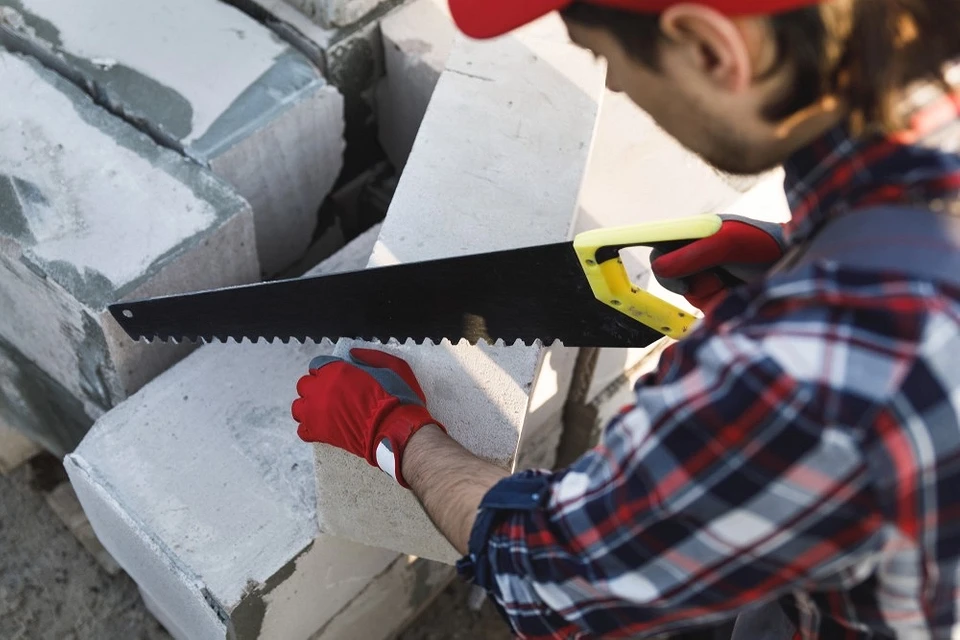
2. Reciprocating saw
The tool resembles a jigsaw. It got its name from the external resemblance of the cutting blade to a saber. The electric saw operates from the mains, the user can adjust the depth of the pendulum stroke and control the cutting speed. The electric saw has a body with a comfortable handle into which a long cutting blade is inserted. After turning on the tool, it makes uniform pendulum movements. This allows you to make figured and simple cuts. True, to perform them well, you need some experience.
The advantages of using a reciprocating saw include high accuracy and speed of cutting. It can be simple or complex in shape. Using a reciprocating tool, you can perform a closed cut, that is, cut the part not completely, but to a certain depth, and cut grooves of the desired size. The only disadvantages of this option are the high cost of power tools and the need to buy cutting blades that gradually become unusable. The sequence of work is the same for all electric saws and is similar to that performed with a hacksaw. The part is marked and installed on a solid base. Cuts are made that are used as guides. The power tool is placed at an angle of 45˚ to the gas block and begins to saw. Important point: strong pressure on the tool is prohibited. This will ruin the quality of the cut.
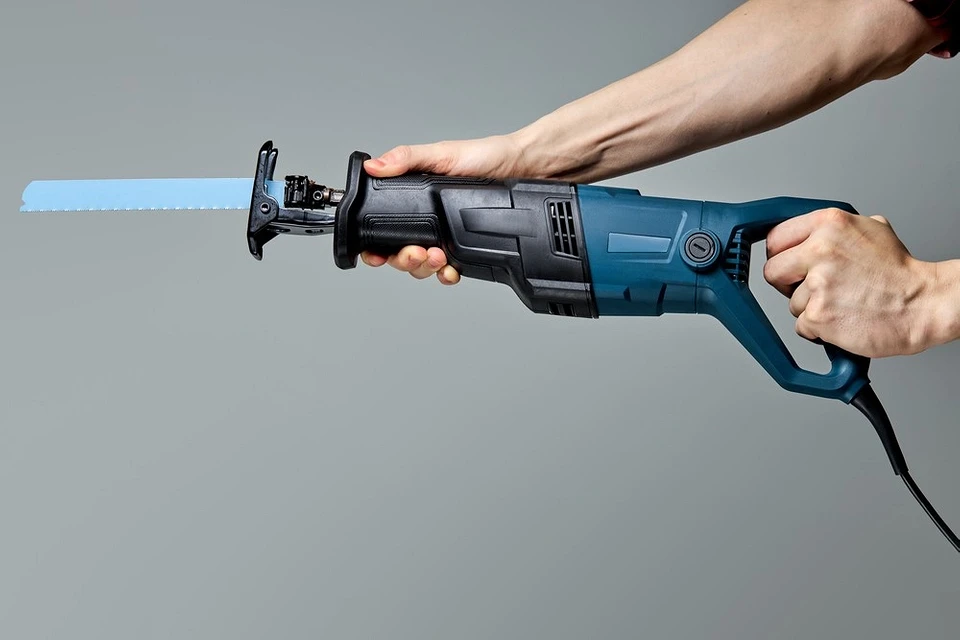
3. Alligator saw
This professional power tool is equipped with two cutting edges arranged in parallel. When the motor is turned on, they move in opposite directions, which increases cutting speed and accuracy. The alligator chews its food in a similar way. This similarity explains the unusual name of the electric saw. Porous aerated concrete is sawn through very quickly and easily in this way. The worker does not have to put in almost any effort.
The advantages of Alligator cutting include speed and high cutting accuracy. Operating this power tool is safe and quite simple. When the teeth become clogged, the locking mechanism is activated and it stops. Impact-free cutting does not leave chips on the surface.
There are also disadvantages. One of them is limited application. Blind holes, for example, cannot be cut with such a device. Like any professional equipment, the Alligator is expensive. It is not advisable to buy it for one-time work.
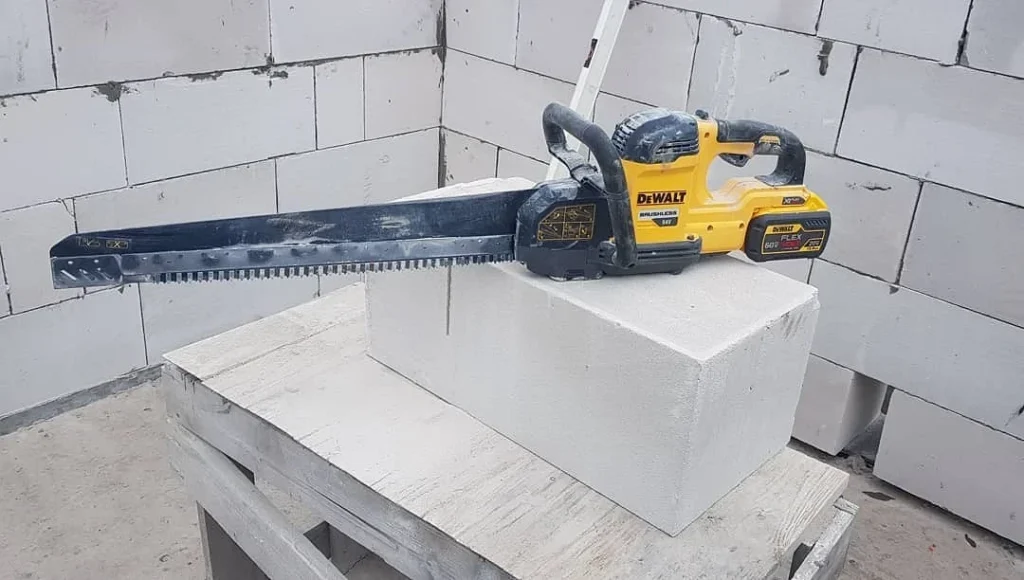
4. Chainsaw
It is considered a universal power tool, although it was originally used for sawing wood. The design of the equipment is quite complex. The cutting chain is closed in a loop. It moves through two sprockets along a guide rail. Another sprocket secures this system to the drive shaft, through which the movement of the electric motor is transmitted. The degree of chain tension is adjustable, this ensures the normal operation of the equipment.
The advantages of working with chain power tools are high speed and maximum cutting accuracy. Professionals choose it for making U-shaped notches and complex-shaped cuts. The electrical equipment is optimally balanced and is comfortable to work in any position, including sawing overhead and at any angle. You can change the length of the guide bar, which allows you to work with blocks of different sizes.
Disadvantages: the chain gets dull quickly. Another disadvantage is the stretching of the chain circuit during continuous sawing, the chain heats up and stretches. Therefore, it is advisable to take cooling breaks and keep the power tool away from dust.
This tool is not designed to work with gas blocks. Therefore it gets very hot. The sprockets quickly wear down and fail. This is not a problem, since replacing them is a simple and inexpensive procedure. It is much worse if dust clogs the electric motor and it breaks. It will be impossible to restore it. Novice builders are interested in whether it is possible to cut aerated concrete with a chainsaw. This is a gasoline analog of an electric chain saw. It also cuts blocks well, and can also fail due to dust and overloads. Considering that its price is much higher than that of the electric modification, it is better not to risk it.
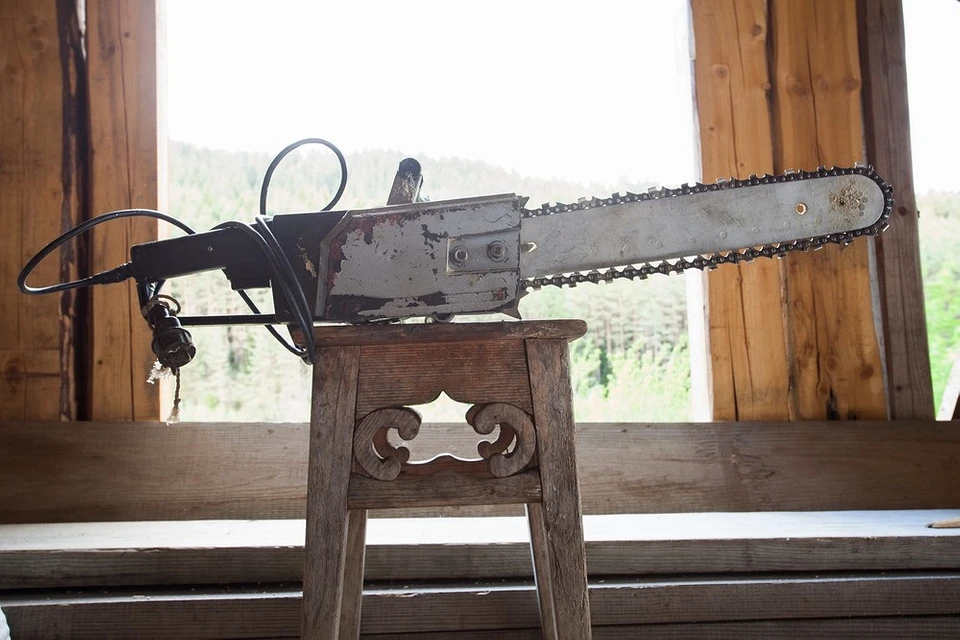
5. Band saw
Structurally, tape equipment is more like a machine than a mobile tool. It has a body with a built-in electric drive, on which two pulleys are attached with a saw stretched between them. This design allows for oblique and straight cutting, making cuts at an angle, and cutting out parts of different shapes from blocks.
Among the advantages of using electrical equipment, we should note the highest possible processing speed. It takes a few seconds to cut an aerated block. You can cut parts of different thicknesses; a powerful motor and other characteristics of the power tool allow this. The cutting line is very accurate, without chipping.
You must understand that you cannot work on band saw equipment without experience. This is a fairly large machine, which is important to learn how to use. It is unsafe to use, makes a lot of noise, and generates a lot of dust. Another disadvantage is that you cannot make a blind hole in the part.
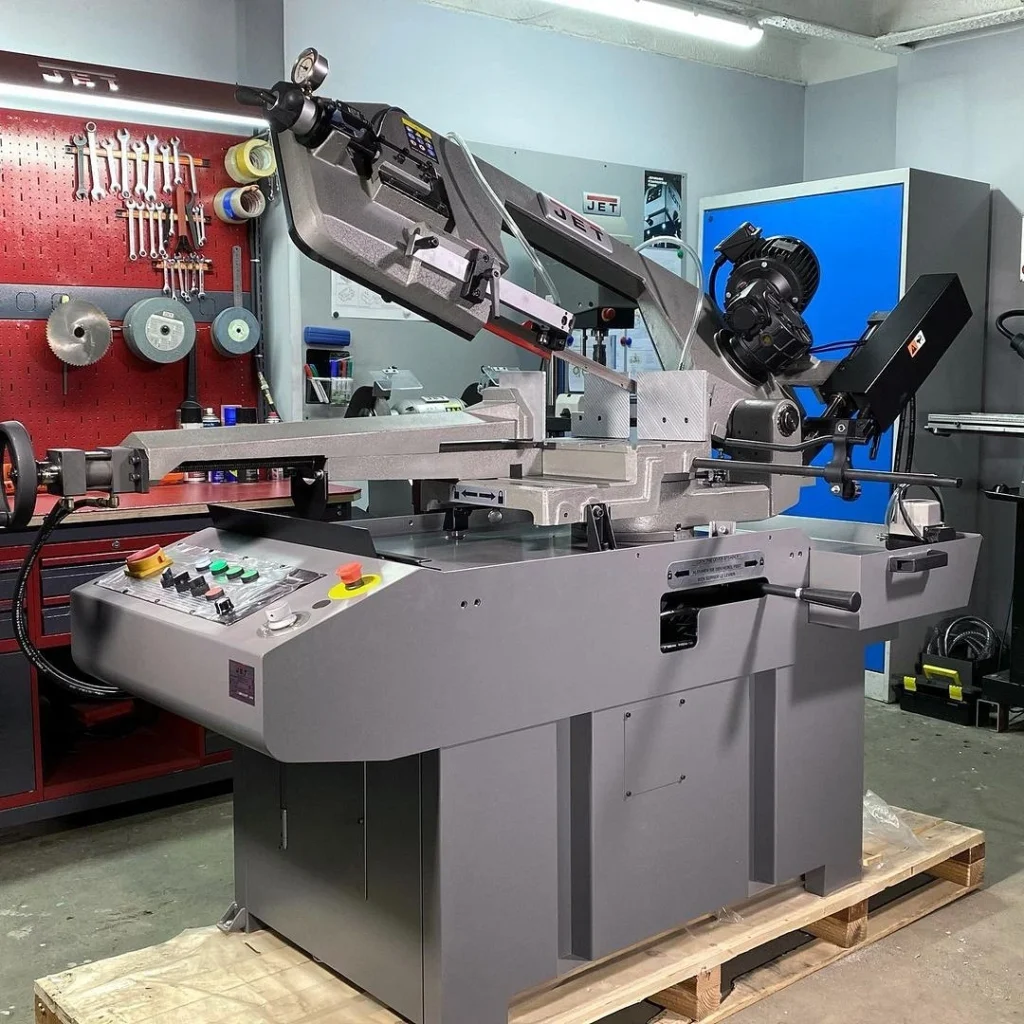
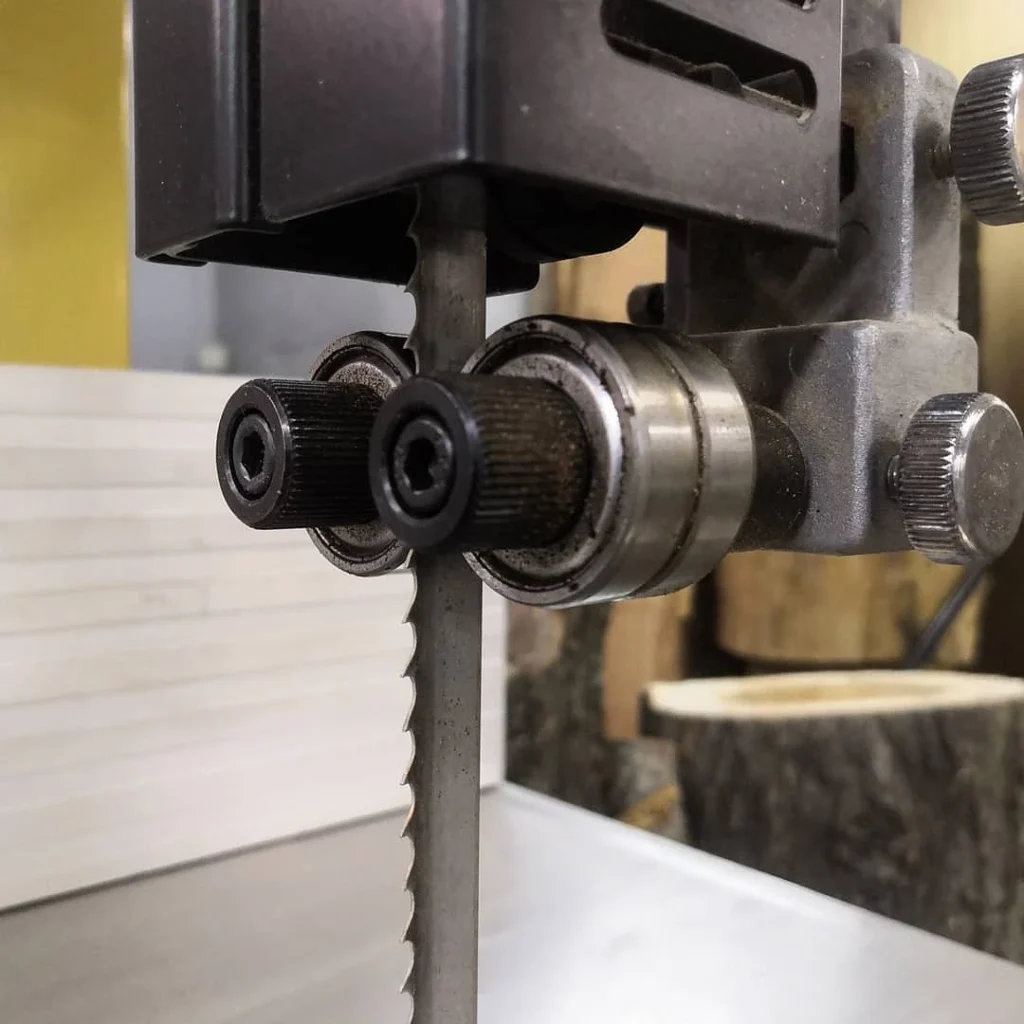
Thus, the best tool for small jobs is a hacksaw. It is affordable and very easy to use. For large volumes, it is worth renting or purchasing one of the varieties of electric saws. Perhaps the best choice would be an Alligator or reciprocating saw. They provide high accuracy and cutting speed, while the equipment itself does not fail for a long time. Using a chain power tool is risky and can break quickly. The band saw cuts perfectly, but this is professional equipment and its purchase is unlikely to justify itself.

